Samsung Galaxy Note 3 Review
by Brian Klug on October 1, 2013 9:00 AM EST- Posted in
- Smartphones
- Samsung
- Mobile
- Android 4.3
- galaxy note 3
S-Pen
I was a tablet user for just over 4 years, but when I mean tablet I mean the old school kind with an active digitizer and Windows, before the age of capacitive multitouch everywhere. With the original Note, I was excited to see active digitizer finally represented again in a mobile device, complete with all the hover and pressure features that come with it. I still find it impossible to use styli on capacitive panels since they lack the resolution and fidelity for the kind of writing I used to do.
With the Note 3, neither quality of the digitizer nor the S-Pen formula change, and that’s a good thing. It’s still the same pen, and from what I can tell, still the same sensitivity and hover distance, and still Wacom based as well. I’m not going to go super in-depth with S-Pen since by this time it should be something readers are familiar with since we’re on the third iteration of Note (and multiple tablets) with the pen.
The Note 3 stows the pen inside itself in basically the same spot as its predecessors, and has the same pen-removal detection and single button on the pen itself. I have no complaints with how it feels or my ability to hold it and write on the screen, and the Note continues to do wrist rejection very well so you can rest your hand on it for making fine grained drawings with a bit of added support.
Perhaps the biggest single improvement with the Note 3 from the perspective of the pen is that it now triggers the menu and back capacitive buttons on the front of the Note 3. I found it confusing on the Note 2 and Note that with the pen out I had to switch between this weird finger and pen modality, rather than be able to accomplish everything with either appendage. With the Note 3, it’s now possible to do just that – it sounds crazy but that single change is the biggest thing that made me instantly happy with the Note 3 the second I pulled the pen out, just being able to hit menu and back with the stylus and have it actually work finally.
With the Note 2 I started to feel like the features that surrounded the pen were getting overwhelming, and I wasn’t sure what feature I should be using at a given time. There’s definitely feature creep each generation as things get added but never really removed, with the Note 3 Samsung does a great job mitigating most of this by surfacing what they believe are the standout features of the S-Pen experience in a popup dialog with a ringed interface and shortcuts to functions. Previously removing the pen would jump you to a special homepage with relevant links if you were on a homepage. Instead if you pull the pen out, this new overlay appears. The overlay makes a lot more sense and has helped me use the pen a lot more than I did previously.
I remember joking with another reviewer that I suspected a large number of Note owners used the pen once, put it back, and never really bothered or understood it after that, and instead were just after the Note for its large display. That sort of mirrored my own use with the Note previously since I’m not artistically inclined or sitting in lectures writing down equations and graphs and diagrams as fast as I possibly can anymore (though soon that hopefully will return with grad school). With the Note 3 and this new interface also shared with the Note 10.1 2014 edition I’m using the pen a lot more since it’s a reminder of what’s really handy.
The ring switcher has shortcuts to action memo, scrap booker, screen write, s finder, and pen window. You can also get to this switcher by hovering and pressing the button on the pen.
Action memo pops up a sticky note that you can immediately start writing on, and it’s the most useful honestly. These notes can then be transcribed on the fly and used to either create contacts or events or look at a location in google maps. The idea is that you’d quickly jot down a phone number and name, or an address, and then be able to act quickly on them or save it for later. I find this works surprisingly well. Samsung says their handwriting transcription engine is also even more accurate this generation, but I don’t have specifics.
Scrap booker lets you grab content displayed on the screen and store it for later, this seems to also parse what’s in a view and intelligently take metadata along with it, for example web pages, YouTube videos, and maps will all get pulled along.
Screen write is a perpetual favorite, it takes a screenshot that you can then annotate or draw on top of. Handy and useful if you need to send something with a pithy remark or drawing to someone either for work or play.
S-Finder is a universal search function that parses through all your notes and memos and writing for a string entered in the search bar. Samsung is always transcribing notes so they’re searchable, this surfaces everything including those hand written notes. I’m reminded of how OneNote search worked, very useful if you’re taking a lot of notes.
Pen window is like a new version of multi window, except instead of snappable windows it’s a viewport of arbitrary size matching roughly what you draw on screen. In practice though the windows are the same aspect ratio as the display (16:9) just whatever rough size you’ve drawn the square and scaled to fit. Samsung continues to try and solve the multi-window problem and admittedly does a novel job here given the constraints of the Android platform. Not every app can be put in one of these smaller windows, rather a subset of the multi window applications.
S Note and the other applications that I remember being present on the Note 2 are still around, as well, it’s just this smaller subset that’s exposed and promoted through the ring switcher. Of course you can also disable the action switcher menu and have pen detachment launch action memo or do nothing at all.
I think S Pen is novel, and what’s important to me works well (the equation parsing engine is supposedly even better and worked with what I fed it), I’m just more sold on the Note as a platform because of screen size than I am note taking. Although the Note 3 doesn’t have the killer third party app attention that draw something had with the original Note, there is Snapchat and a variety of others though that might make the S-Pen a very attractive thing for people looking at the Note for something beyond note taking.


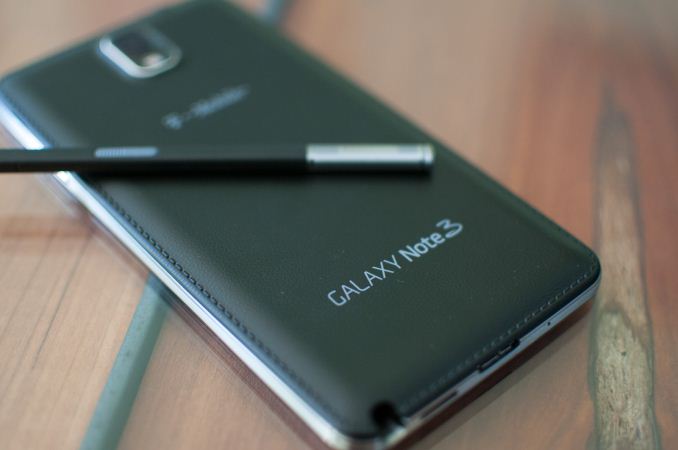

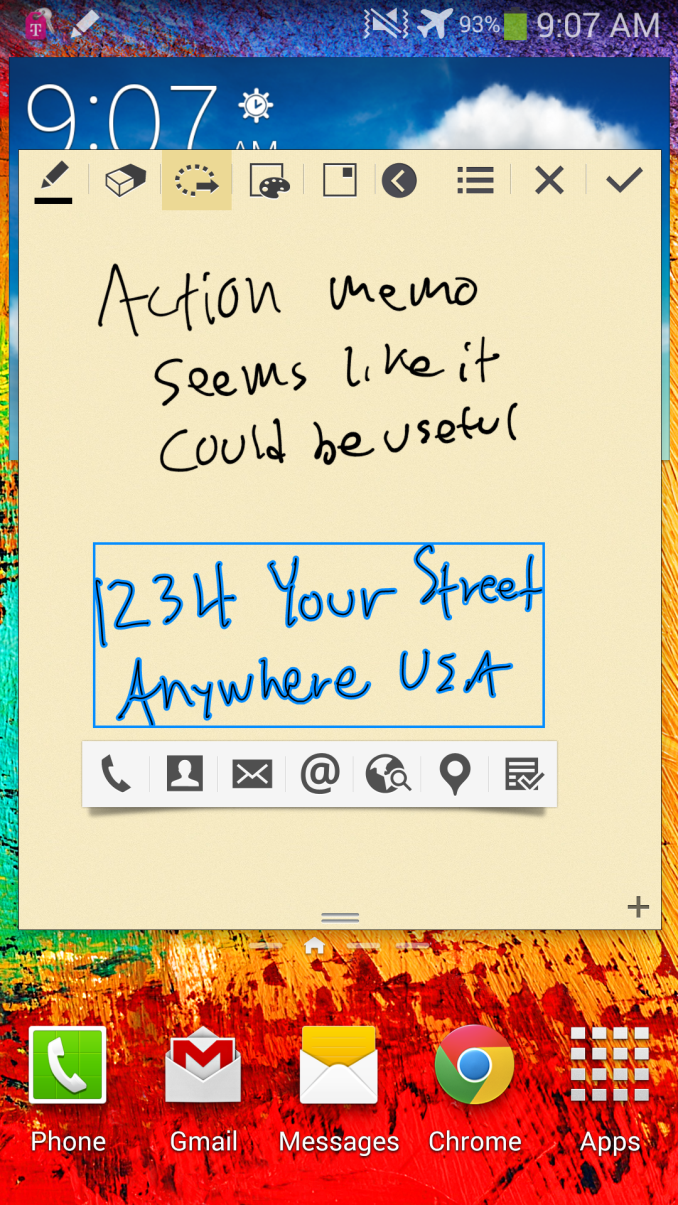

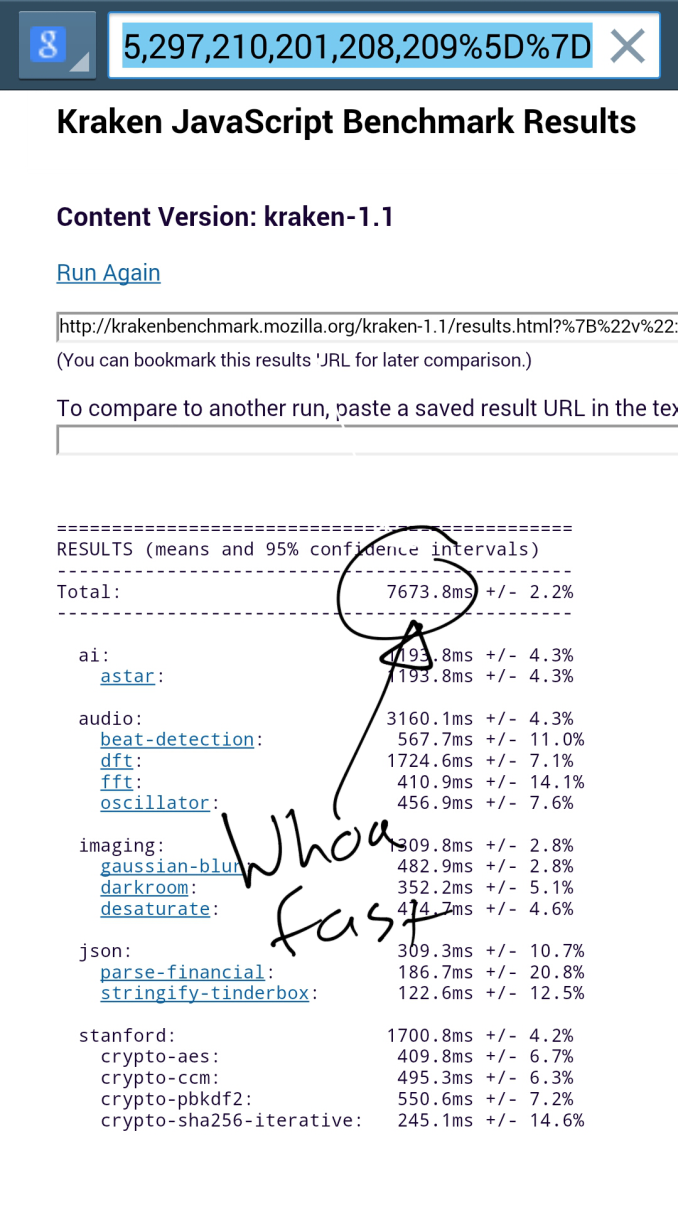
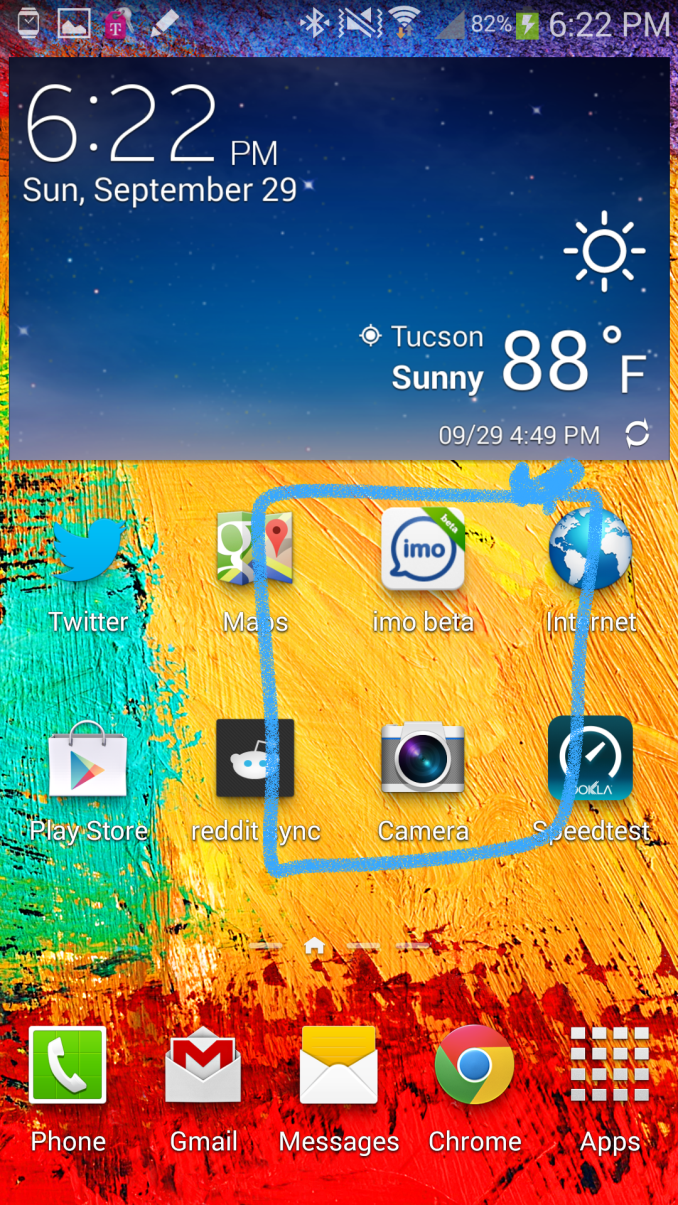
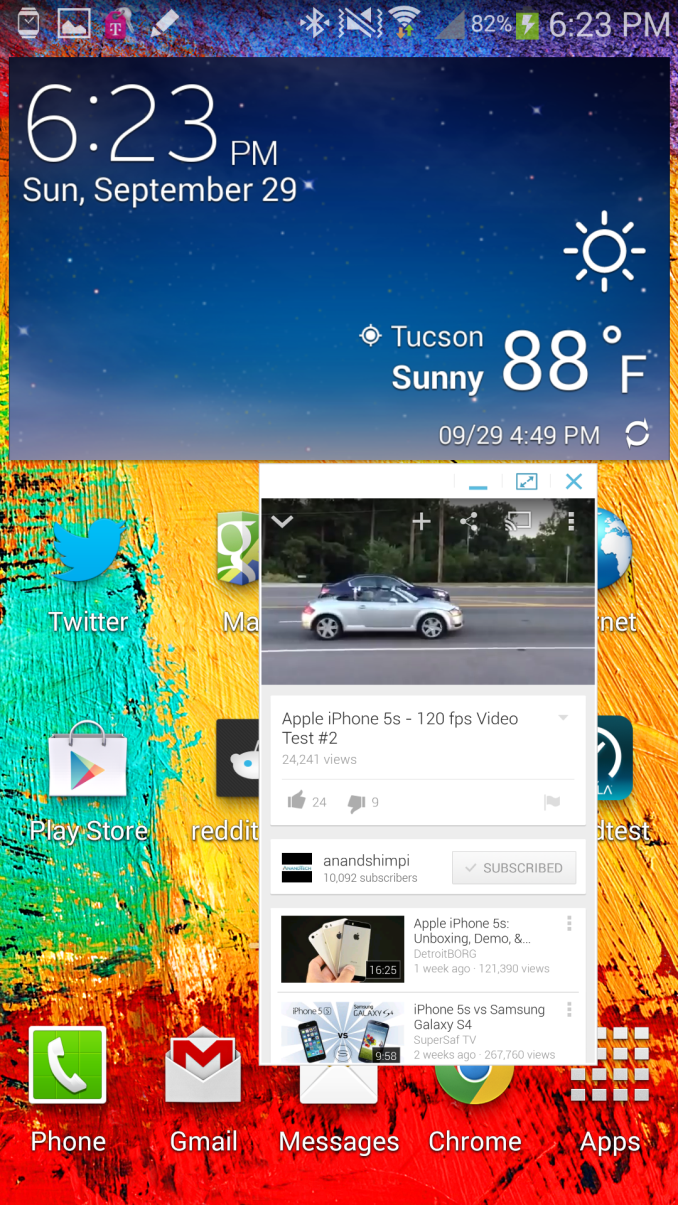
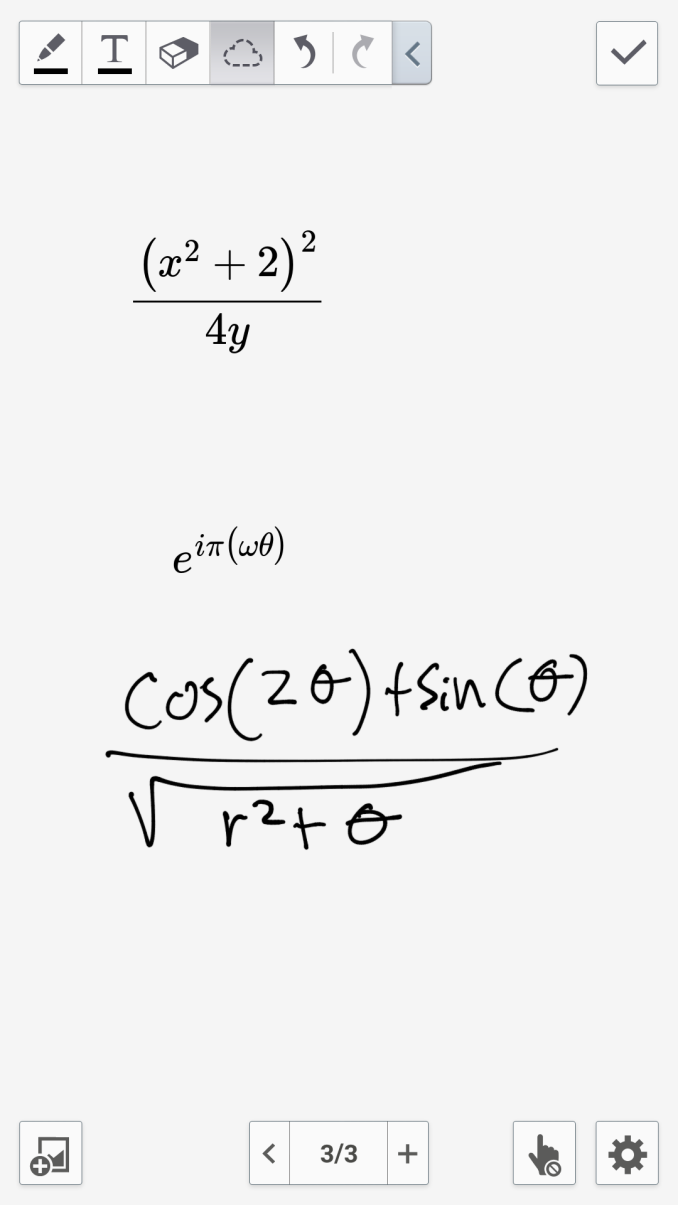
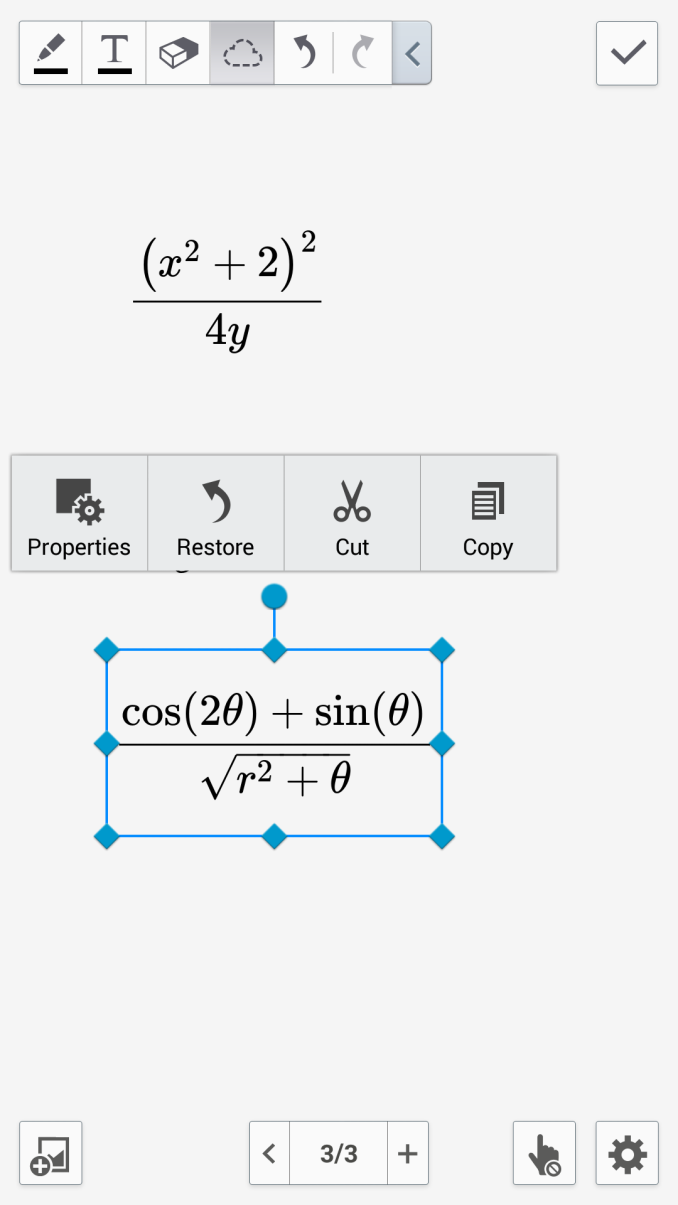








302 Comments
View All Comments
Scipio Africanus - Tuesday, October 1, 2013 - link
Got to hand it to Apple's newest SoC for its phenomenal single core performance. It looks to be ahead of everyone. Non-ARM designed CPUs will be the way forward for phones here. While A15 is nice, it's power envelope is just not that great for phones. So we have Qualcomm and Apple and Samsung only using ARM designed cores. So for Android's sake, hopefully Project Denver will actually pan out so we have some more competition in this space.And I have to get this off my chest but I love my Note 2, its nearly perfect. EXCEPT for the GPU. It was at best low to midrange when it came out and now its just low end. They put in what was a really fast CPU at the time and not so great GPU.
ddriver - Tuesday, October 1, 2013 - link
It is no more than ~20% (at best, limited case scenarios) better with native code, the BS JS benchmarks should be disregarded because they use completely different engine implementations, plus everybody cheats at those like there is no tomorrow. And if for some reason you really need CPU performance on a mobile, the note 3 will actually trounce the 5s considering it has twice the cores and number-crunching tasks scale pretty much perfectly. Considering the snapdragon 800 has the same NEON width as A7, I expect the note 3 to be a good 50% better at number crunching - software rendering, audio/video editing, multiphysics and whatnot.While some might look at the snapdragon 800 for being "inferior" since it is based on arm v7, it is not like the note 4 will come with a quad core v8 chip at 2.3 Ghz, even with a v8 chip it will only be incrementally faster. No consumer device manufacturer will shoot himself in the foot by releasing something better than the bareincremental minimum needed.
That is the reason I'll be getting the note 3, here it is 25% cheaper, has a pressure sensitive stylus, huge screen, 4k video, usb 3, better GPU and all the bells and whistles of latest contemporary tech... The 5s better single thread performance is nowhere nearly enough to make up for all the advantages of the note 3.
Scipio Africanus - Tuesday, October 1, 2013 - link
I never said the 5S was superior in any way except for its single threaded performance. The Note 2 that I own today is a phenomenal device and the only thing I'd replace it with is another phablet type such as a Note 3 (or 4) or maybe an Optimus G Pro or Xperia Z. I still love having an SD card and removable battery so it looks like the Note series is it for me.The 64-bit move is just getting ready for the future IMHO in terms of memory addressing. Using that particular stat as a "feature" is just marketing. The larger number of registers in ARM V8 is nice and does help the Iphone in 64-bit application benchmarks. But most people don't have a clue what 64-bit means except that its bigger than 32.
KPOM - Wednesday, October 2, 2013 - link
The point is that Apple optimized the hardware and software for its intended purpose. No one is running a Monte Carlo analysis on a smartphone. Mobile software isn't really optimized for quad-core processors, and heat concerns limit their usefulness right now. For the purpose of running mobile software, a well-optimized dual-core processor running at a lower clock speed appears to be better than a less optimized quad-core running at a higher clock speed. It's like the Pentium 4 vs. the Pentium M and Core2 architectures. The latter two were superior even though they ran at lower clock speeds.steven75 - Wednesday, October 2, 2013 - link
Why do you trumpet things like "USB 3" when this very review shows it offers no benefits? Does reading out spec lists impress your friends or something?PxNZone - Wednesday, October 2, 2013 - link
Maybe you should check that section again about USB 3. There is an updated part. It states that the connection transfer speed is faster with Windows PC that has USB 3.0.Wolfpup - Tuesday, October 1, 2013 - link
5.7" Grrr, if Apple isn't going to release a larger phone, I wish they'd turn say the iPad mini INTO a phone. The mini seems to be pocketable, and it's obviously already very close to being a phone as it is...I'm sick of having to drool over awesome sized screens on the Android devices.
ddriver - Tuesday, October 1, 2013 - link
Seriously, all the apple fanboys b1tch about how the note series is "ridiculously, embarrassingly big" and you want to use the ipad mini as a phone :DWell, it makes sense, just like with plastic, plastic was lame and cheap-ass until the iphone 5c, and suddenly plastic became great. The ridiculous review at engadget b1tching about the note 3 plastic while praising the 5c plastic...
darkcrayon - Tuesday, October 1, 2013 - link
You realize not all plastic is the same right? And you can't even see the hole in your own example - Apple released a plastic phone as the lower end model to their metal device (something they've been doing on and off for well over a decade now).ddriver - Tuesday, October 1, 2013 - link
Lower end? It is more expensive than 99% of the phones on the market. And in this particular case, the plastic is exactly the same - POLYCARBONATE. Naturally, in the mind of an apple fanboy, the plastic on the 5c is special and magic and full of awesome...